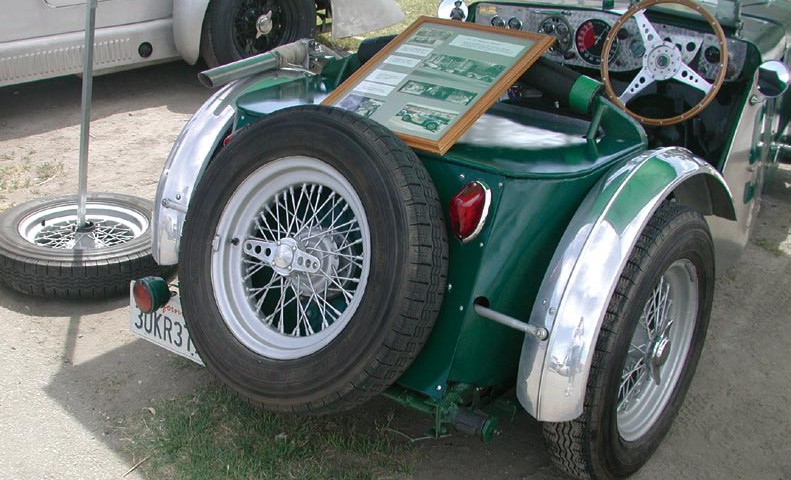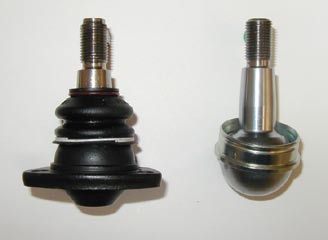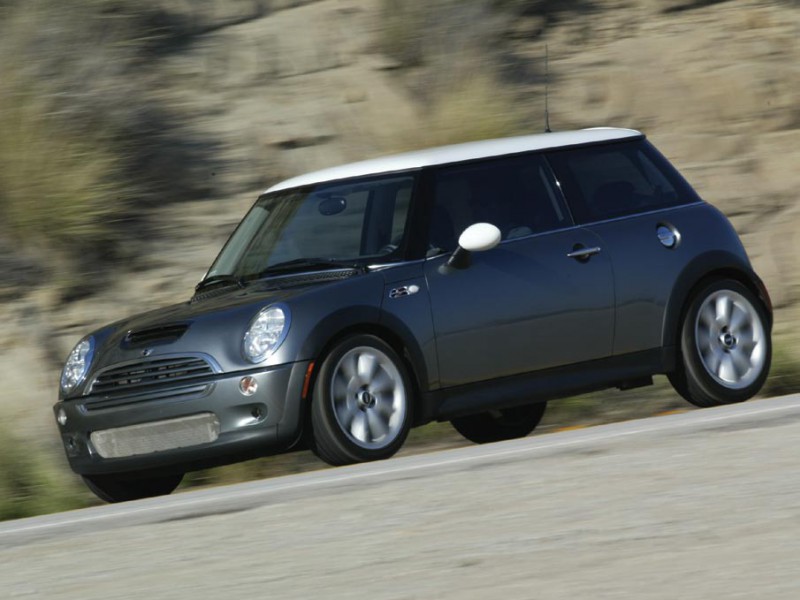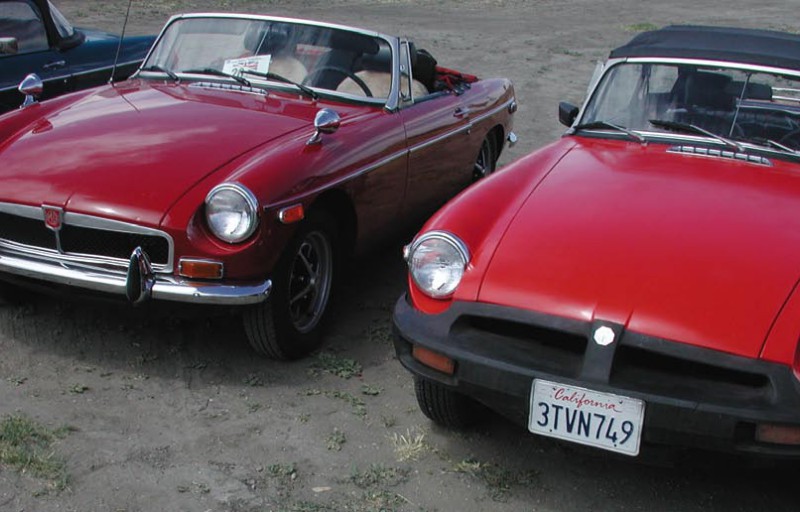One of the most frequently asked questions faced by the Moss Motors technical department is, “What size tire should I buy?” In response, here’s a size-matters look at the four black round things that keep your sports car from dragging on the ground.
Luckily, British sports cars were originally designed with a fairly limited range of wheel and tire combinations.
So, we can begin lumping some applications together. In the interest simplicity, the original fittings are followed by some caveats. (Purists please note: We are quite aware of the minor production differences and have chosen the most popular OE sizes.)
Behind The Numbers
These factory-fitment tires have Numeric System sizing. The first digits indicate the nominal cross-sectional width of the tire, and the last digits are the wheel rim diameter. The approximate diameter of the tires can be determined by digging into auld tire lore. An aspect ratio is the percentage of the section height to section width, and Numeric System tires had nominal 88-92 aspect ratio. Compare this to the modern tires with 50-60 aspect ratios (commonly called “series”) and it becomes obvious that your classic chariot was designed to operate on tires that were very tall and skinny in comparison to the rubber strips masquerading as tires on today’s sport-compact street racers.
Original-style-bias-ply (known to Brits as “cross-ply”) tires have a much narrower tread width or contact patch than modern radial tires. This becomes an important issue when understanding the loading experienced by early suspension designs. With a typical tread width of less than 4″, the original bias-ply tires break free easily, reducing the loading on the wheels and suspension. Watching early sportscar racing footage shows that the current sport-compact “drifting” craze is far from a modern phenomena. Going sideways around corners with the tail hanging out was the real test of sportscar driving.
Even with these early tires, wheel failure was a problem, and most manufacturers had to increase wheel strength to withstand spirited driving.
As tire technology advanced, these changes influences factory chassis engineering. Radial tires were first fitted as options, then later as standard equipment.
The first radial tires to see service on British sportscars were labeled in the Metric Sizing System, which again did not have a stated aspect ratio. By this time, “low profile” tires were popular, and the aspect ratio ranged from 78 to 82 depending on manufacturer and date, the earlier tires being taller. Comparing the original-fitment radial tires with the earlier OE bias-ply sizes show how little diameter-and hence, gearing-changed.
Unfortunately, many of the original sizes are no longer available, so wider, lower-profile tires are substituted. The resulting domino effect causes changes in gearing and steering effort-and often a decrease in safety and handling. Much of these cars’ charm comes from their nimble feeling, which is often lost with overly wide tires. Heavy low-speed steering and lack of crispness when cornering are symptoms of too wide a tire. At a certain point, wider isn’t better, and it’s important ti check wheel widths and choose tires that are matched correctly to the wheel. In some cases this means ordering tires from companies that specialize in vintage tires because modern radials are too wide to be safe on the original wheels.
Matching factory tire diameter is also necessary to retain correct odometer accuracy, ride height, and final-drvie gearing. Aesthetically, a tire that’s too short may look out of place in the wheelwell. The Typical Modern Tire Sizes charts give calculated dimensions of available tires; compare these diameters and recommended wheel widths. (Wheel width is measured between the two bead mounting surfaces of the wheel, not from edge to edge.)
When completing a restoration many choices affect safety. Maintaining the car’s original look and handling are important to many restorers, yet when it comes time to choose tires, cost and availability often outweigh aesthetics. Luckily, a few companies (some of which are listed below) specialize in stock, period-correct-bias-ply tires for British sportscars for those who want to accurately restore early cars. If driving safety is a priority, though, modern-tech radials are available that fit well and offer increased hanging and safety. Just don’t be tempted to install an incorrect-size tire because it’s on sale. Use this article to help enjoy your sportscar the way it’s engineers intended.
By Kelvin Dodd
Sources
Coker Tire, (800) 251-6336, www.coker.com
Hoosier Tire, (574) 784-3152, www.hoosiertire.com
Kelsey Tire, (800) 325-0091, www.kelseytire.com
Michelin, (800) 847-3435, www.michelin-us.com
Yokohama, (800) 366-8473, www.yokohamatire.com












'Modern Tires For Classic British Sports Cars' have 6 comments
December 11, 2012 @ 8:21 am Mike Scott
Thanks for this information. My son and I are currently working on my Elva MklV Courier and when we get it back on the road we intend to start on my old Bugeye Sprite. I know the Sprite tires are shot after sitting for about 30 years or so. Thanks again for the information and I will be needing parts from Moss.
Mike
December 11, 2012 @ 8:32 am Brian Dubin
Kelvin,
Great article! I have a 53 TD and when I replaced the tires, used tubes inside some 155/80 radials. At a recent club meeting I noticed that a similar TD with the same size tires used tubless valvestems and no tubes. The owner said when he replaced the bias ply tires some years ago the tire shop installed the tubless tire valves and that he has used tubeless for three sets of tires. Any thoughts on this?
Brian Dubin
December 11, 2012 @ 3:51 pm luis
Im restoring a1970 tr6 and on the radial tire recomendation chart cant find the tr6,
December 11, 2012 @ 10:52 pm Pat Garity
No mention of the TR-6 with the red stripe Michelins. The story was that the tall sidewall tire was utilized to meet the new head light regulations that the DOT imposed. I wonder if it was true. In responce to the question about tubes on TD’s. The centers are rivited so technicaly need tubes but most don’t need them but I have seen a few that leaked slowly.
December 12, 2012 @ 11:25 am Alan Saltzman
Great information. But, now that I bought two new old style tires 165×14 for my ’67 MGB GT, can I mix tires and buy two new style tires. If it works, what would be better, new style on the front and old style on the rear or just the opposite.
Thanks,
Alamo
June 15, 2025 @ 8:23 pm Kati Hattwick
Looking for the appropriate tires/tubes for 1960 MGA. In central VA. Not ready to break the bank. HELP!!